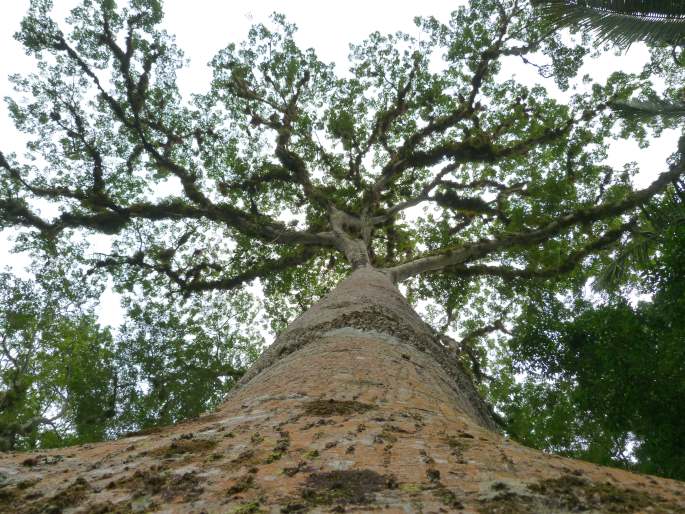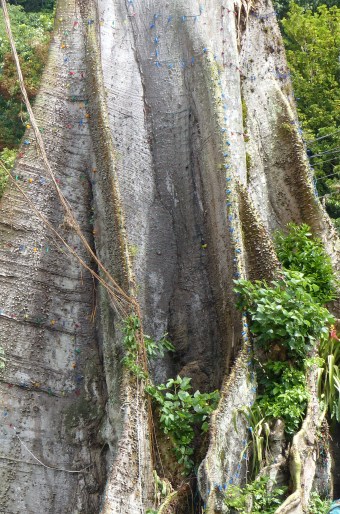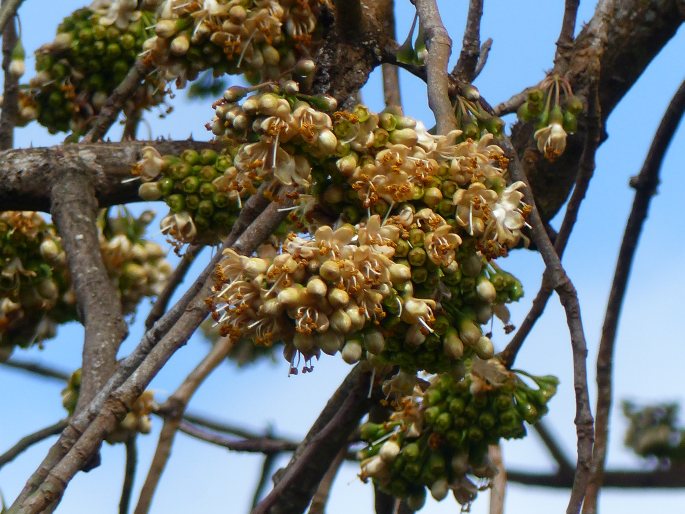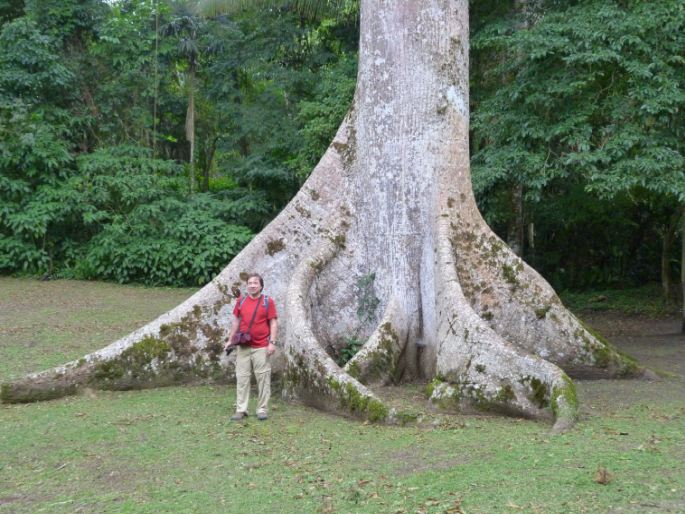Syn.: Bombax pentandrum L., Ceiba anfractuosa M. Gómez, nom. illeg., Eriodendron anfractuosum DC., Eriodendron pentandrum (L.) Kurz, Xylon pentandrum (L.) Kuntze
Family: Malvaceae Juss.

Distribution: Pantropical species, often cultivated and naturalized, its exact native range is obscure. Probably native to tropical America, from Mexico to northern Brazil, introduced in tropical Africa and Asia. The genus Ceiba contains about 17 species, most of them occurring in tropical America.
Ecology: It grows in moist or dry plains, in rainforest, and in gallery forest in drier areas, but chiefly in secondary forests, also on Mayan ruins, at elevations up to 1000 m asl.

Description: Giant tree, up to 60 m tall or larger. Trunk cylindric, 0.8–2 m in diameter, often with strong buttress roots; the bark brown or gray, more or less covered with short prickles but otherwise smooth or nearly so; the crown broad and spreading. Leaves 5- to 9-foliolate, glabrous, petiole 5–23 cm long, leaflets with a petiolule 0.5–1.2 cm long, oblong-lanceolate, 10–21 cm long and 2.3–4.2 cm wide, slightly narrowed at the base, acuminate at the apex, margins sometimes denticulate near the apex. Inflorescences fasciculate, few- to many-flowered, flowers 5-merous, regular, 2.5–4 cm long, the pedicel 2.5–3 cm long, glabrous, calyx campanulate, 4- to 5-lobate, 1–1.2 cm long and 0.9–1.2 cm wide, glabrous outside, silky-villous inside, petals obovate, 2.5–4 cm long and 1–1.5 cm wide, light yellow, villous to tomentose outside except the base, pubescent near the apex inside. The fruit is a capsule, ellipsoid or fusiform, acute at both ends, 10–26 cm long and 3–4 cm in diameter, seeds numerous, subglobose, 5.5–7 mm long and 4.4–5.5 mm wide, kapok copious, grayish.
Use: The species is important source of fibre and of timber. The seed pod is filled with fibre called kapok which surrounds the seeds. Kapok fibre is used for stuffing cushions, pillows and mattresses, and for insulation, absorbent material and tinder. The wood is suitable for papermaking.
Note: The Maya regarded this tree as sacred, the Indian inhabitants never willingly cut a tree. They viewed it growing through the center of the Universe, its roots in the underworld, its trunk in the upperworld and its branches in heaven.




These images were taken in Belize, Caracol (by Jindřiška Vančurová, February 3, 2015).


